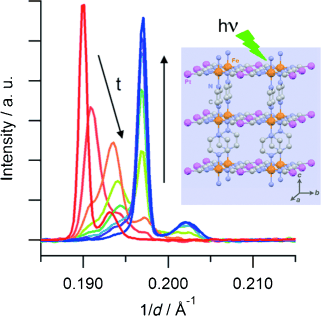-
Structural Investigation of the High Spin→Low Spin Relaxation Dynamics of the Porous Coordination Network [Fe(pz)Pt(CN)4] · 2.6 H2O
T. Delgado, A. Tissot, C. Besnard, L. Guénée, P. Pattison and A. Hauser
Chemistry - A European Journal, 21 (9) (2015), p3664-3670


DOI:10.1002/chem.201405405 | unige:48201 | Abstract | Article HTML | Article PDF | Supporting Info

The Hoffman-type coordination compound [Fe(pz)Pt(CN)4]⋅2.6 H2O (pz=pyrazine) shows a cooperative thermal spin transition at around 270 K. Synchrotron powder X-Ray diffraction studies reveal that a quantitative photoinduced conversion from the low-spin (LS) state into the high-spin (HS) state, based on the light-induced excited spin-state trapping effect, can be achieved at 10 K in a microcrystalline powder. Time-resolved measurements evidence that the HS→LS relaxation proceeds by a two-step mechanism: a random HS→LS conversion at the beginning of the relaxation is followed by a nucleation and growth process, which proceeds until a quantitative HS→LS transformation has been reached.